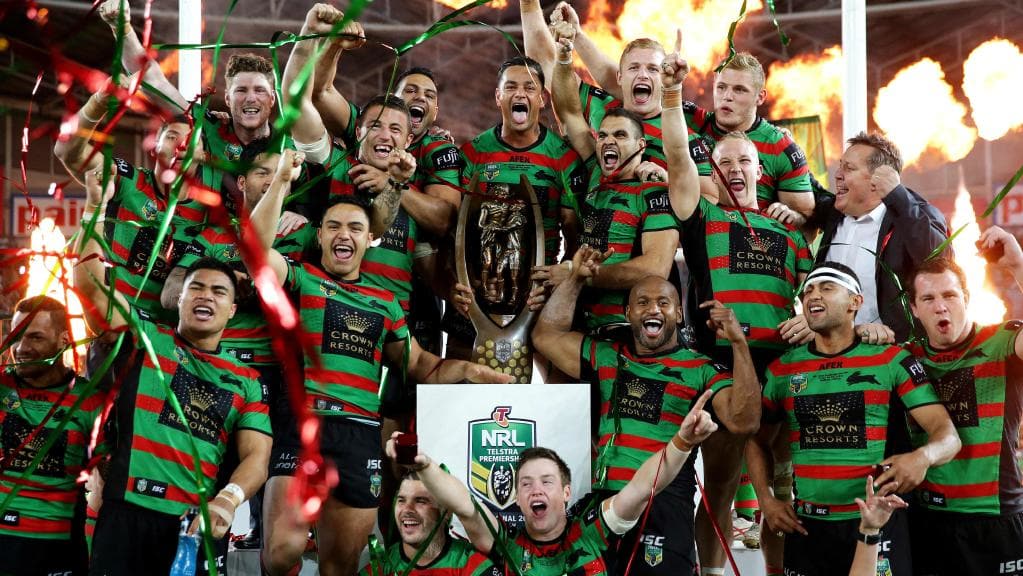5 Steps to Building a Winning Team – Get Team Engaged

January 2014, and I am sitting at Redfern Oval with the Rabbitohs National Rugby League (NRL) head coach, Michael ‘Madge’ Maguire, and we’re talking about what it will take to win the NRL premiership. The Rabbitohs have not won a premiership for 43 years, and in the preceding two years the Rabbitohs had been knocked out one game before the grand final. Madge wanted to discuss my ‘Elite Performance Framework’ methodology – designed to create ‘inside-out’ leadership – and how I could assist him in bringing a premiership back home to Redfern.
Madge was very clear, for him, there was no next year; there was no tomorrow. His vision was, ‘We win the premiership in 2014. It starts today'. For the premiership to be realized, Madge knew he had to change his leadership style. He knew he had to stand back and let the players and coaching staff take responsibility. More importantly, he knew that everyone in the organisation, players and coaches, had to be focused on improving individual performance every day, every session, every moment.
To build winning teams, in sport or business, requires everyone to believe in each other, believe in the team, and believe in the process. No matter what the score, no matter how bleak the circumstances may seem, the focus must be on the current play. Outside distractions – weather, fans, referees, competitors, social commentary – cannot be controlled. It is all about controlling the controllable, each individual doing their job consistently well. It is all about belief.
Engagement – Mission focused
The belief Madge reinforced to his team at the Rabbitohs was underpinned by club’s core values, performance standards and behaviours. Every individual must own it. Every individual must lead. It must be led and driven from the ‘inside out’.
For organisational teams to remain focused and engaged, leaders must continually reinforce key messages. Depending on what challenges lay ahead, Madge tailored the message to ensure the team was engaged in the mission. Madge continually looked at ways to reinforce the message and, importantly, stimulate each individual. Different methods were used to connect and inspire the team during meetings and presentations, and away from the club individual players were sent inspirational videos and messages via text. Madge ensured that every individual was 100% engaged and focused.
History shows the Rabbitohs marched onto to win the 2014 NRL premiership.
Engagement unlocks potential
For business leaders, the same applies as for sporting organisations. Those who have a clear organisational vision and purpose, require an engaged and committed team to deliver the mission. The key is to engage and empower individuals so that their potential is realized. To bring their best every day. To deliver consistent performance required to build winning teams.
Engagement does not mean just being happy at work, simply clocking in and clocking out doesn’t cut it. The definition of employee engagement – “is the emotional commitment the employee has to the organization and its goals”.
The well-known statistics below illustrate the opportunity for business leaders. The question to ask is how to mobilise and engage the ‘not engaged’ majority?
- Engaged (15%) – emotionally committed, talent potential leveraged
- Not Engaged (67%) – happy, do bare minimum, not invested in company mission or beliefs
- Actively Disengaged (18%) – negative influence
How to improve engagement from a Navy SEAL
Brett Gleeson; founder and CEO of TakingPoint Leadership, former Navy SEAL, and bestselling author of TakingPoint Leadership; states the steps for improving engagement aren’t complex, they simply must be prioritized. Which means engagement must be a core function of the business leader’s role.
Here are Brett’s five simple, yet powerful steps, to improve employee engagement:
Step 1 – Put everyone in the right role
Align the roles with the company mission. Use personality profiling to ensure right person is in the right role.
Step 2 – Provide training & remove obstacles
No leader can expect to build a culture of trust and accountability without setting the team up for success.
Step 3 – Provide meaningful work to allow contribution
Engaged employees are doing meaningful work and have a clear understanding of how they contribute to the company’s mission, purpose, and strategic objectives.
Step 4 – Check in often to provide voice
Today individuals crave regular feedback, which of course leads to faster course correction and reduces waste. Require regular formal and informal check-in strategies.
Step 5 – Frequently discuss engagement & ‘engage’ all
Be transparent regarding any current challenges faced, talk regularly about engagement. Just like Madge did with the Rabbitohs in 2014, personalise the message to the individual’s needs.
Building winning teams that are emotionally invested in the company mission and goals takes patience and determination. This is a long-term play that will deliver loyalty, commitment, and financial return. Make it a priority today.
Cheers
Matthew Jones
TheCUBE Founder & CEO
TheCUBE is a powerful business coaching platform allowing coaches to deliver greater results and life changing value to more clients with less effort.
